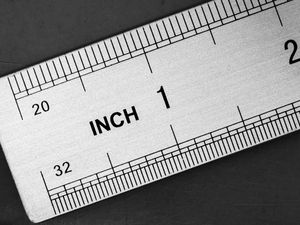Dimension Round-Up: UPS is Rounding Up

If you’re 5 feet 11.1 inches tall, your driver's license likely says you’re 5' 11”—the DMV rounds down fractions for anything under 0.5. But UPS isn’t the DMV. Instead, it’s taking its lead from FedEx with new dimensional weight adjustments that would round any fraction of an inch up to the next inch. If the DMV took calculation advice from UPS and FedEx, you’d be a solid 6 feet tall.
Today, we’re talking about UPS’s updates for package dimensions— when it goes into effect, what to expect, and how to save your money in the midst of these changes.
What’s Changing With Dimensional Weights at UPS?
Beginning August 18, 2025, UPS will update its method for determining the dimensions of a package. Instead of rounding down for measurements from .1 to .4 and up from .5 to .9, all fractional measurements of length, width, or height will round up to the next whole inch.
On its website, UPS provides the following example: “If the length of a package is 11.1 inches, that package will be deemed to have a length of 12 inches.”
What Does That Actually Mean For Shippers?
Standard UPS boxes come in whole-inch measurements, but custom boxes come in a variety of sizes. Let’s say you’ve been sending parcels via UPS in boxes that measure 10.1 x 10.1 x 10.1. Under the old calculations, UPS would consider that a 10 x 10 x 10 box with a cubic size of 1,000.
The updated measuring system would consider the same parcel an 11 x 11 x 11 box, resulting in a new cubic size of 1,331. Your cubic volume has increased by more than 33%, without actually changing the size of the parcel.
For one parcel, that increase stings. When sending thousands, you may see a 5-digit increase in your shipping spend— for the exact same service.
How Can You Save Money?
This move is just the latest in a sea of surcharges, surges, and additional handling costs designed to increase the carriers’ bottom lines— while maintaining the same level of service. If you’re tired of paying more for less (or— at a minimum— the same), there are a few options for lowering costs.
If you haven’t recently, it’s time to perform an audit of your packing strategy. Here are a few things to consider:
● Are you using different boxes for different products?
● Is there any empty space in the box?
● Can you adjust padding to secure items and reduce the size of the box?
Aside from reducing your parcel size to fit the next lowest whole inch for all dimensions, there are two ways to reduce your parcel spend: parcel audits and contract negotiations.
Parcel audits can help identify data inaccuracies and recover costs resulting from carrier errors.
UPS contract negotiations are a proactive way to update your contracted rates. You may not be able to change the way UPS calculates its dimensional weights, but you can reduce the overall rates you pay.
Contact ShipRx today for a free savings analysis to find out just how much you can save on your UPS invoices.